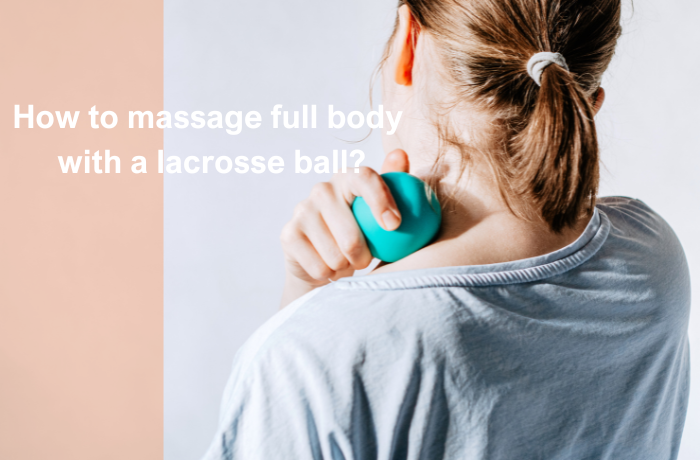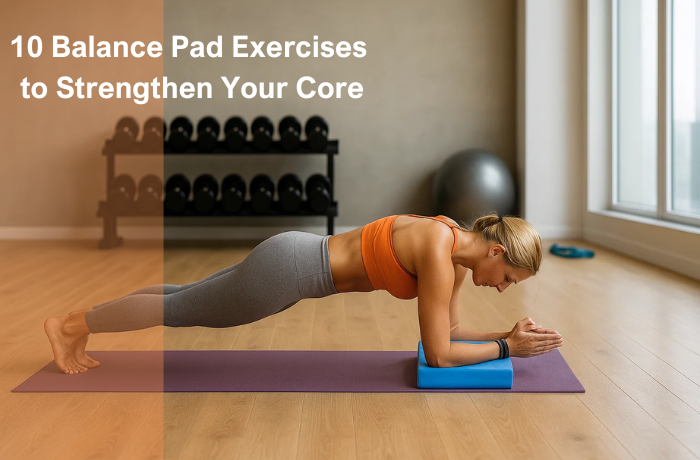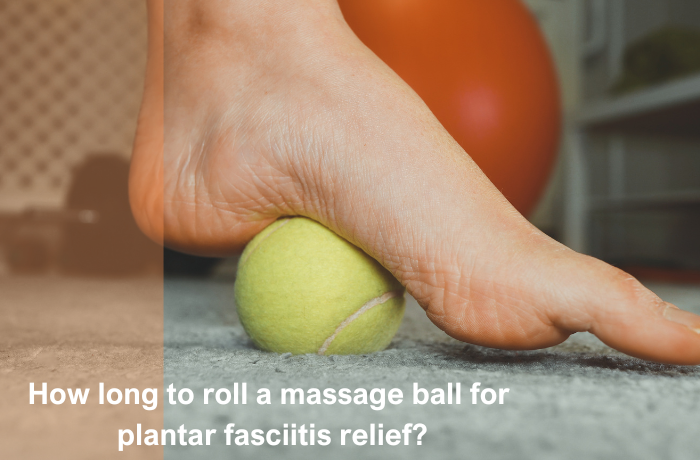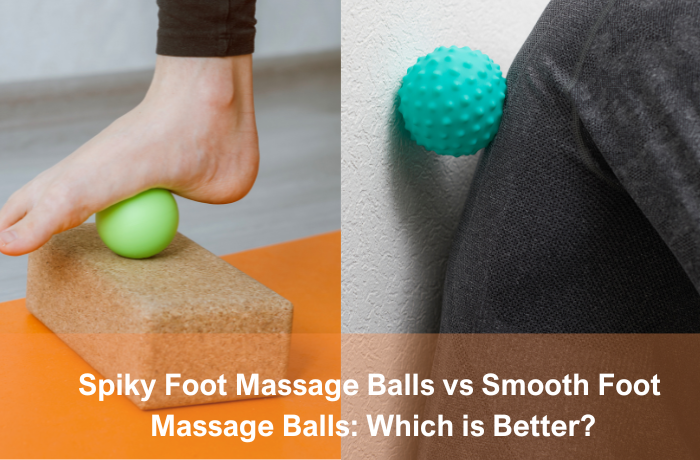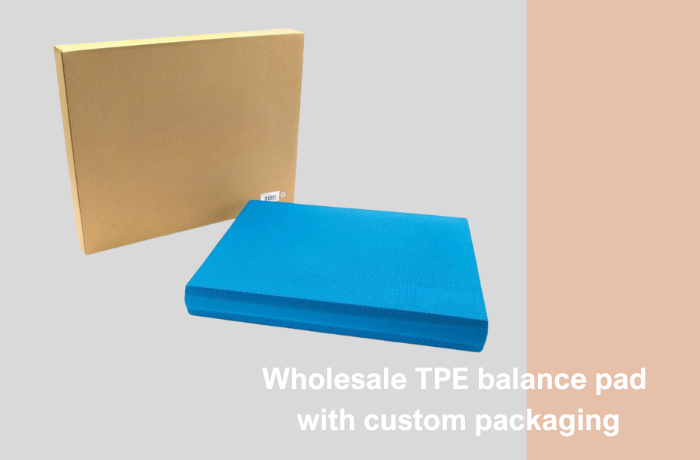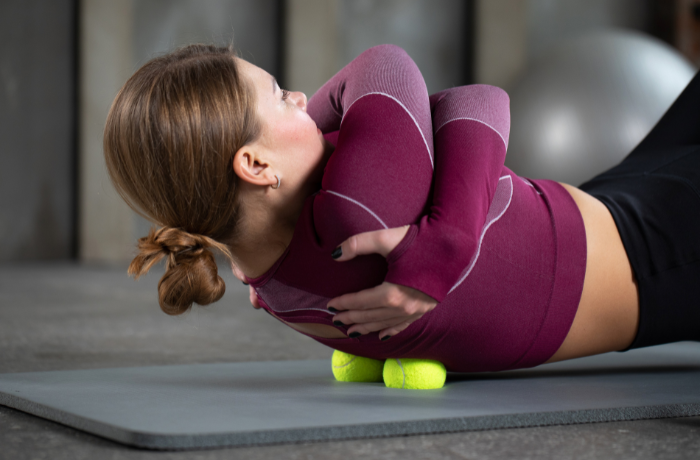
You can use a lacrosse ball to massage your whole body by working on key muscles with simple techniques. The lacrosse ball helps you reach deep spots and release tension in tight areas. Many people love this tool for self-myofascial release and pain relief. When you roll your muscles over the lacrosse ball, you boost mobility and help your body feel better. You do not need fancy gear or special skills to start. Just grab a lacrosse ball and let your muscles relax.
Wichtigste Erkenntnisse
- Pick a firm, smooth lacrosse ball that is about 2.5 to 3 inches wide. This size helps you reach deep muscles and hold the ball well. Warm up your muscles before you start the massage. Use slow and gentle pressure with the ball. Roll or press the ball on tight spots. Use the lacrosse ball often on your feet, legs, hips, back, shoulders, chest, and neck. This can help lower soreness and help you move better. Stop massaging if you feel sharp pain or numbness. Also stop if your skin changes color. Do not use the ball if you have some health problems or injuries. Massage three to six times each week, based on what you need. Always listen to your body so you do not do too much.
Getting Started
Choosing a Lacrosse Ball
Picking the right lacrosse ball makes a big difference in your massage experience. You want a ball that is firm, smooth, and about 2.5 to 3 inches in diameter. Most lacrosse balls are made from solid rubber, which gives you the right amount of pressure for deep tissue work. A good grip helps the ball stay in place, even if your hands or the floor get a little sweaty. Some people like a textured surface for extra grip, but a smooth ball works well for most self-massage techniques.
Here’s a quick table to help you choose:
| Faktor | Why It Matters for Massage |
|---|---|
| Größe | Fits medium to large muscle groups |
| Gewicht | Heavier balls stay put and give steady pressure |
| Grip | Prevents slipping on skin or floor |
| Hardness | Firm balls work best for healthy muscles |
| Material | Natural rubber is durable and cost-effective |
If you have sensitive areas or injuries, you might want a softer ball. For most people, a standard lacrosse ball is perfect for full body use.
Preparing for Massage
Before you start, set up a comfortable space. A yoga mat or carpeted floor works well. Take a few minutes to warm up your muscles. You can walk around, do some light stretching, or gently move your arms and legs. Warming up helps increase blood flow and gets your body ready for lacrosse ball massage. Place the ball on the target muscle, then slowly lower your body onto it. Start with gentle pressure and adjust as needed.
Tip: Always listen to your body. If you feel sharp pain, stop and try a different spot or use less pressure.
General Tips
To get the most out of your lacrosse ball, try these tips:
- Use a wall or the floor to control how much pressure you apply.
- Roll slowly over tight spots and pause on sore areas for about 30 seconds.
- Breathe deeply and relax into the pressure.
- Focus on one muscle group at a time.
- Try different techniques, like rolling or holding steady pressure, to see what feels best.
Lacrosse ball massage works best when you use it regularly. You can target your feet, back, glutes, or any area that feels tense. With practice, you’ll find the self-massage techniques that help your body feel its best.
Lower Body Massage
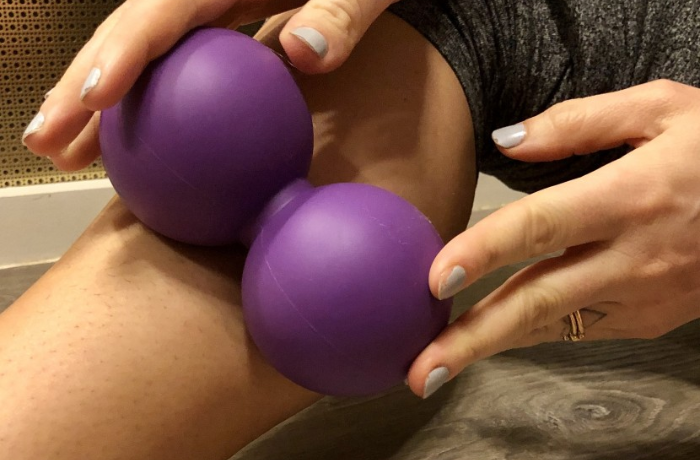
Feet
Your feet work hard every day. They support your body and help you move. When you use a lacrosse ball on your feet, you can break up tightness and help sore muscles relax. This simple massage can help with common problems like plantar fasciitis, heel pain, arch pain, and general soreness. Rolling the ball under your foot also boosts circulation and helps reduce muscle stiffness.
To start, sit in a chair and place the lacrosse ball under your bare foot. Roll it slowly from your heel to your toes. Focus on any tight or sore spots. If the ball slips, put it inside a sock for better control. Spend about 60-90 seconds on each foot. You might feel some discomfort, but you should not feel sharp pain.
Tip: Pause and hold the ball on extra tight spots for 20-30 seconds. This helps release tension and improves mobility.
Kälber
Tight calves can cause muscle soreness and even lead to problems in your feet or knees. A lacrosse ball massage helps loosen these muscles and reduces tightness. You can use this technique after walking, running, or standing for long periods.
Sit on the floor with your legs straight. Place the lacrosse ball under your calf, just below your knee. Use your hands to lift your hips and roll your calf over the ball. Move slowly from your knee down to your ankle. If you find a sore spot, pause and let your weight sink into the ball. You can also flex and point your toes to help release tightness. Spend 60-90 seconds on each calf.
Note: If the ball rolls away, try placing it in a sock or use a yoga block to keep it steady.
Quads
Your quadriceps are the big muscles on the front of your thighs. They help you walk, run, and climb stairs. When these muscles get tight, you might feel muscle soreness or stiffness in your legs. Athletes often use a lacrosse ball to target the quads because it helps release tightness, improves blood flow, and speeds up recovery. This massage also helps you move better and keeps your muscles healthy.
To massage your quads, lie face down with the lacrosse ball under your thigh. Support your upper body with your forearms. Use your other leg to help control your weight. Roll the ball up and down your thigh, moving from your hip to your knee. Pause on any sore muscles or tight spots. You can bend and straighten your knee to help release muscle knots. Try dividing your thigh into three sections—upper, middle, and lower—and spend time on each part. Roll for 60-90 seconds per leg.
- Adjust your body weight to control the pressure.
- Breathe deeply and stay relaxed.
- Combine this massage with foam rolling for even better results.
Hamstrings
Your hamstrings run along the back of your thighs. These muscles help you bend your knees and move your hips. Tight hamstrings can cause muscle soreness, limit your movement, and even lead to strains. Using a lacrosse ball gives you a deep massage that targets sore muscles and helps break up tightness.
Sit on a chair or the floor and place the lacrosse ball under your thigh. Roll your hamstring over the ball, moving from just below your glutes to above your knee. If you find a tight spot, pause and let the ball press into the muscle. You can also gently swing your leg side to side to help release muscle knots. Regular use of this technique can improve flexibility and prevent muscle strains.
- The firmness of the lacrosse ball lets you reach deep into the muscle.
- This massage is a simple and cost-effective way to care for your sore muscles.
- Try using the ball for 60-90 seconds on each hamstring.
Tip: If you want more control, use your hands to lift your body and adjust the pressure on the ball.
Hips and Glutes
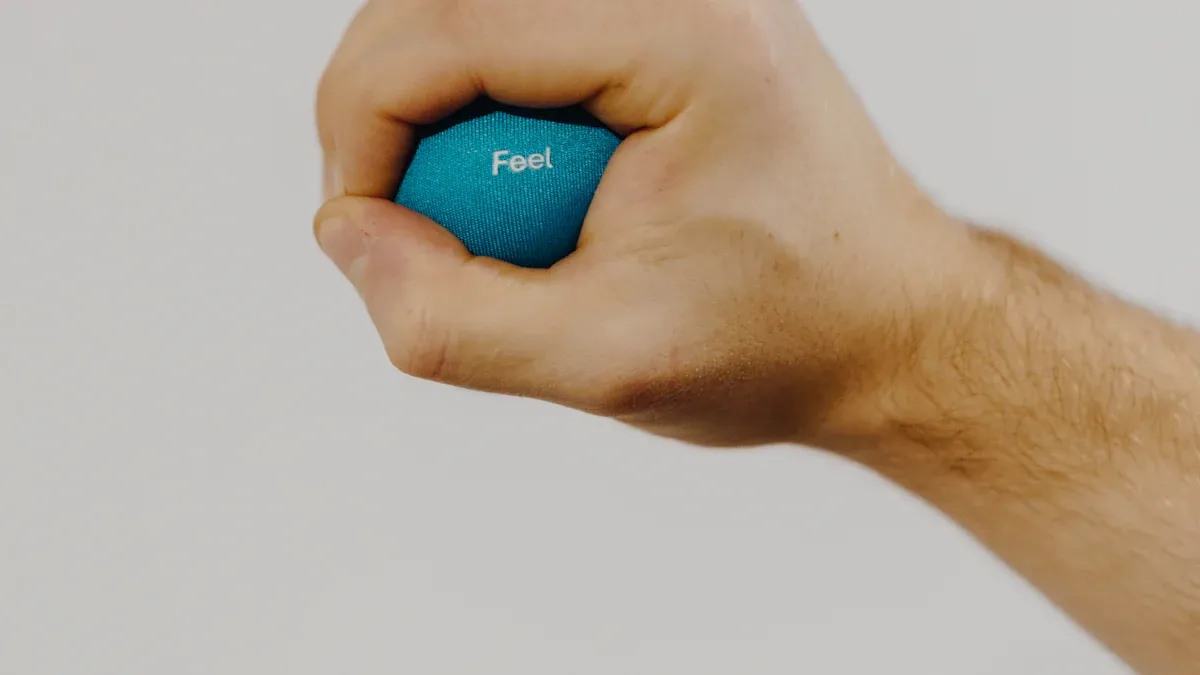
Gesäßmuskeln
Your glutes do a lot of work every day. They help you walk, run, and stand tall. When these muscles get tight, you might feel pain in your hips or lower back. You can use self-myofascial release to ease this tightness and improve how you move. Sit on a flat surface and place the lacrosse ball under one side of your glutes. Gently roll, rock, or rotate your body so the ball presses into sore spots. Adjust your weight to control the pressure. If you want deeper pressure, cross your ankle over your opposite knee. This move helps you reach deeper layers of muscle and gives you targeted muscle release.
Tipp: Pause on any tight spots for 45-60 seconds. Breathe deeply and let the muscle relax.
Lacrosse ball massage for the glutes can relieve pain, boost flexibility, and help you move better. Many people find this technique helpful after sitting for long periods or after a tough workout.
Hüftbeuger
Your hip flexors help you lift your knees and bend at the waist. These muscles often get tight from sitting or sports. Tight hip flexors can cause pain in your hips, back, or legs. Self-myofascial release with a lacrosse ball can help loosen these muscles and improve your hip mobility.
To start, lie face down and place the ball just below your hip bone or near your belly button. Gently shift your weight to press into the muscle. You can cross your opposite leg over for more pressure. Move slowly and stop on any sore spots. Hold for 45-60 seconds, then switch sides. This technique helps release tight fascia and muscle knots that cause discomfort.
- Hip flexor massage can improve flexibility for movements like squats or lunges.
- Regular use supports better posture and helps prevent injury.
Self-Myofascial Release
Self-myofascial release is a way to care for your muscles using tools like a lacrosse ball. You use your own body weight to press into tight areas and trigger points. This method helps break up tight fascia, reduce muscle soreness, and improve blood flow. Many people use self-myofascial relief techniques after exercise to recover faster.
Some studies show that self-myofascial release can lower muscle soreness after hard workouts. It works by increasing blood flow and helping your muscles relax. You can use these techniques on your hips and glutes to unlock movement and feel more comfortable. Try to make self-myofascial part of your weekly routine for the best results.
Note: Always listen to your body. If you feel sharp pain, stop and try a different spot.
Upper Body Massage
Back
Your back holds a lot of tension, especially if you sit or stand for long hours. You can use a lacrosse ball to target tightness and muscle soreness in your upper and mid-back. Stand with your back against a wall. Place the ball between your spine and shoulder blade. Move your body up and down or side to side to roll the ball over the muscles. When you find a tender spot, pause and let the ball press into it. Breathe deeply and relax for 1 to 3 minutes. This helps the ball sink into the muscle and release tightness.
You can also try these steps for a deeper massage:
- Lean against the wall and adjust your angle to find sore areas near your shoulder blade.
- Stretch your rhomboid muscles by placing one hand on your opposite shoulder and the other on your elbow. Hold for 10-15 seconds.
- Target the rotator cuff by changing your body angle and holding pressure for 10-15 seconds.
- Keep your feet close to the wall and use a wide stance for better control.
Tip: Always listen to your body. Avoid sharp pain and use gentle pressure around bony spots.
Regular use of this massage can help improve your posture and bring pain relief to knotted muscles.
Shoulders
Shoulders often get tight from stress or heavy lifting. You can use a lacrosse ball to loosen these muscles and ease muscle knots. Stand next to a wall and place the ball on the back of your shoulder. Lean in and roll the ball in small circles. Move your arm across your chest or up and down to stretch the muscle while the ball presses into it. If you find a sore spot, hold the pressure for 30 seconds and breathe deeply.
Try these ideas for better results:
- Use the ball on both the front and back of your shoulder.
- Roll slowly and pause on tight spots.
- Combine this with gentle arm stretches for extra muscle knot relief.
This simple therapy can help you move your shoulders more easily and reduce muscle soreness.
Chest
Your chest muscles can get tight from sitting, typing, or lifting. A lacrosse ball massage here can open up your chest and help you breathe better. Stand facing a wall and place the ball just below your collarbone. Press your chest into the ball and move side to side. Let your muscle relax as you roll the ball along your chest. You can also use gentle, steady pressure on sore spots.
- This method uses acupressure to release tension and improve blood flow.
- Moving the ball along your chest can help stimulate the vagus nerve, which may lower stress.
- The technique is easy to learn and works for all fitness levels.
Note: Many trainers and therapists recommend this approach for safe and effective pain relief.
Neck
Your neck muscles can get stiff from looking at screens or sleeping in a bad position. You can use a lacrosse ball to ease tightness and tension in this area. Lie on your back and place the ball under your neck, just below your skull. Gently turn your head side to side or nod up and down. Let the ball press into any sore muscles. Use slow, gentle movements and avoid pressing too hard.
- Focus on the base of your skull and the sides of your neck.
- Spend about 1-2 minutes on each side.
- Breathe deeply and let your muscles relax.
If you feel any sharp pain, stop right away. Neck massage should always feel gentle and safe.
Trigger Point Therapy
Trigger point therapy helps you find and release muscle knots that cause pain and tightness. You can use a lacrosse ball for self-trigger point releases at home. The ball’s firm surface makes it great for pressing into tight spots and knotted muscles. When you apply pressure, you may stretch the muscle fibers or help move out old fluids. Many people feel pain relief and less muscle soreness after using this method.
Here are some key points about trigger point release:
- Lacrosse balls work better than tennis balls because they do not slip as much.
- Sie können verwenden self-ischemic compression by pressing the ball into a knot and holding for 30-60 seconds.
- This therapy is safe, affordable, and easy to do on your own.
- Physical therapists often use these techniques and recommend them for home care.
- After releasing a knot, try gentle stretches or exercises to keep your muscles healthy.
Remember: While science does not fully explain how trigger point therapy works, many people find it helpful for pain relief and muscle knot relief.
Regular self-trigger point releases can help you manage tension, improve mobility, and keep your muscles feeling their best.
Safety & Frequency
When to Avoid?
It is important to stay safe when using a lacrosse ball. There are times when you should not use this massage. Here are some reasons to skip it:
- You have a latex allergy.
- Your skin feels numb or strange.
- You have weak skin, a rash, open cuts, or blisters.
- You are healing from a new injury, infection, or have a fever.
- You have connective tissue problems like Ehlers-Danlos or Marfan’s syndrome.
- You take blood thinners or have blood flow problems.
- You have cancer, bad osteoporosis, or broken bones that are not healed.
- You are pregnant, so do not use the ball on your belly.
- You have very high blood pressure or bad arthritis.
If you are not sure, ask a doctor before you start any new therapy.
How Often?
How many times should you use a lacrosse ball for muscle recovery? It depends on what you need and want. Look at this table for simple advice:
| User Condition/Goal | Recommended Frequency | Purpose/Notes |
|---|---|---|
| General Wellness | 3-4 times per week | Keeps muscles loose and helps lower soreness. |
| Specific Pain or Tightness | Täglich | Work on sore spots to help muscle pain. Change if you feel too sore. |
| Athletes and Active Individuals | 5-6 times per week | Helps you recover and feel less stiff after hard workouts. |
| Injury Recovery | As advised by a professional | Always follow expert advice so you do not get hurt more. |
Listen to your body. If you feel very sore, take a break. Doing it often helps, but too much can slow you down.
Signs to Stop
Sometimes your body tells you to stop. Watch for these signs:
- Sharp or sudden pain while using the ball.
- Numbness, tingling, or no feeling in the area.
- Swelling, bruises, or skin changes after using the ball.
- Muscle pain that stays or gets worse.
- Any sign of infection, like redness or heat.
If you see any of these, stop right away. If the problem does not go away, talk to a doctor. Your safety is most important, and good care helps you heal faster.
You will notice changes if you use lacrosse ball massage often. This tool helps loosen tight muscles and makes you more flexible. It can also help you move better in sports or daily life. Many people feel less sore and recover faster after exercise. If pain does not go away, talk to a professional. Try these ideas and see how much better your body feels!
FAQ
How hard should I press with the lacrosse ball?
You want to feel gentle pressure, not pain. Start light and add more if it feels good. If you feel sharp pain, stop right away. Your muscles should feel relaxed, not sore.
Can I use a lacrosse ball every day?
Yes, you can use it daily for tight spots. If you feel sore, take a break. Listen to your body. Most people get the best results with regular use, but not too much.
What if the ball keeps slipping?
Try putting the ball in a sock or use it on a carpet. You can also press it against a wall instead of the floor. This gives you more control and keeps the ball steady.
Is it normal to feel sore after using the ball?
A little soreness is normal, especially if you are new to massage. Your muscles need time to adjust. Drink water and rest if you feel too sore. If pain lasts, talk to a doctor.
Can kids use a lacrosse ball for massage?
Kids can use a lacrosse ball with adult help. Make sure they use gentle pressure and avoid sensitive areas. Always watch for any pain or discomfort. Keep sessions short and fun.

